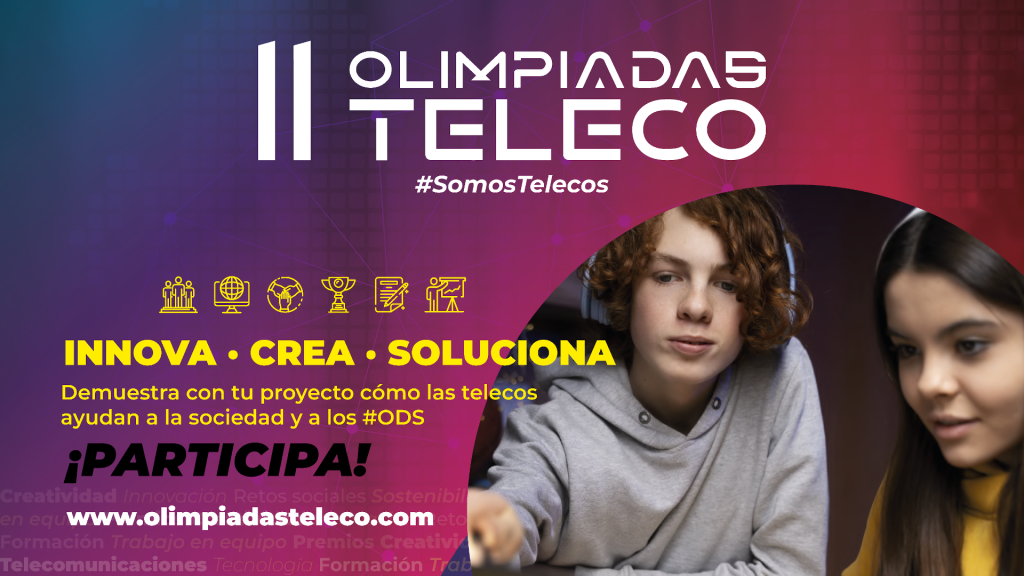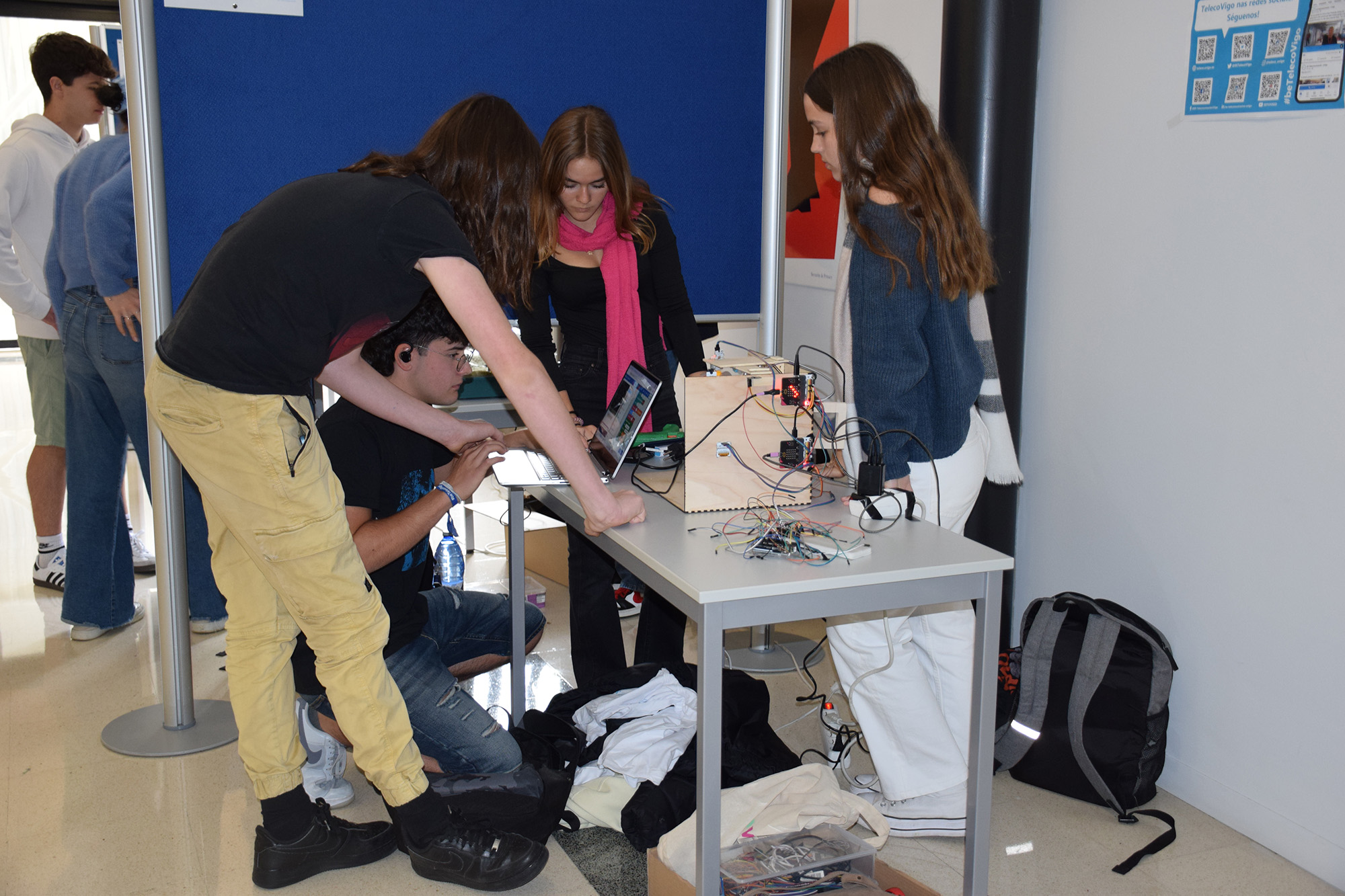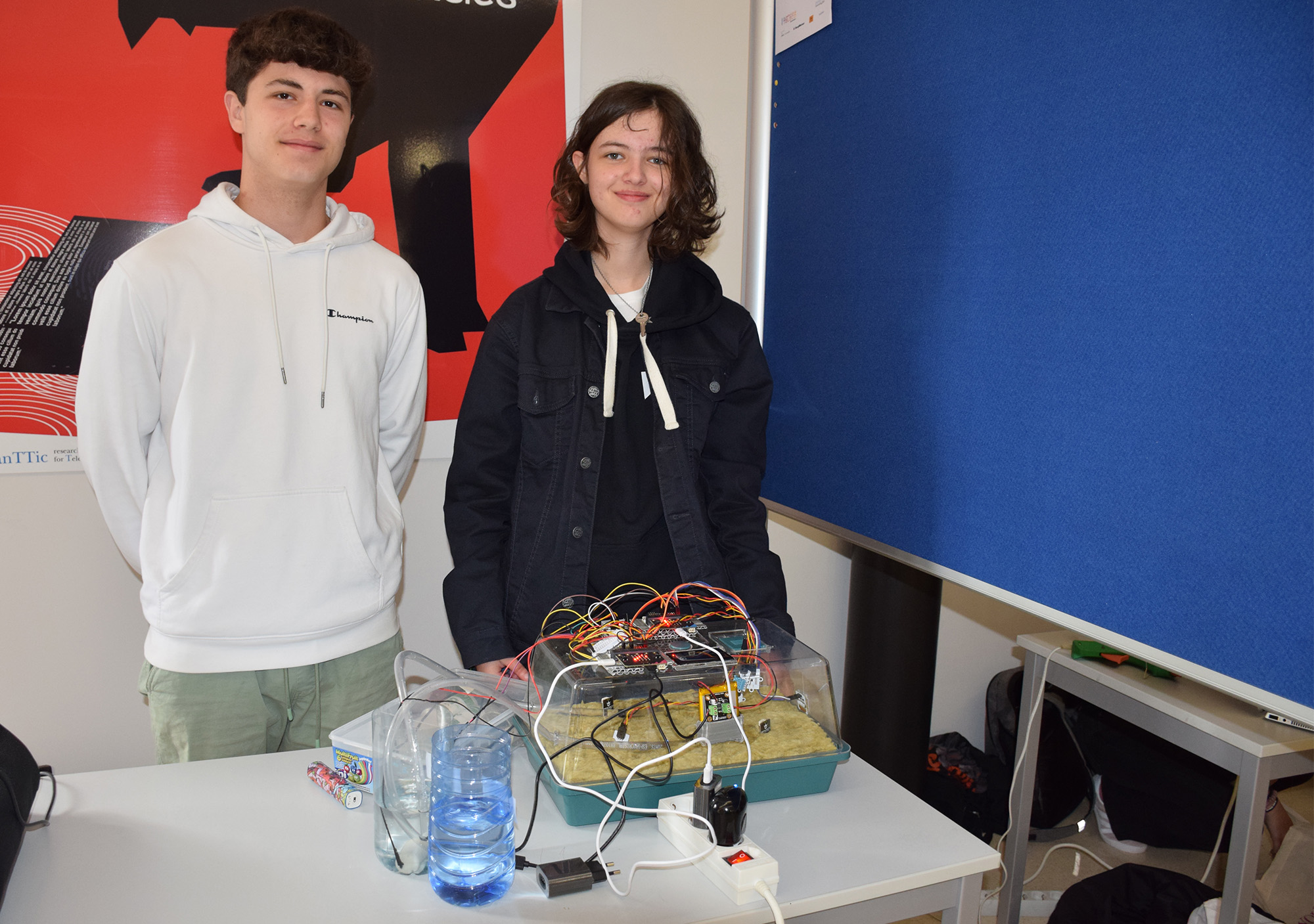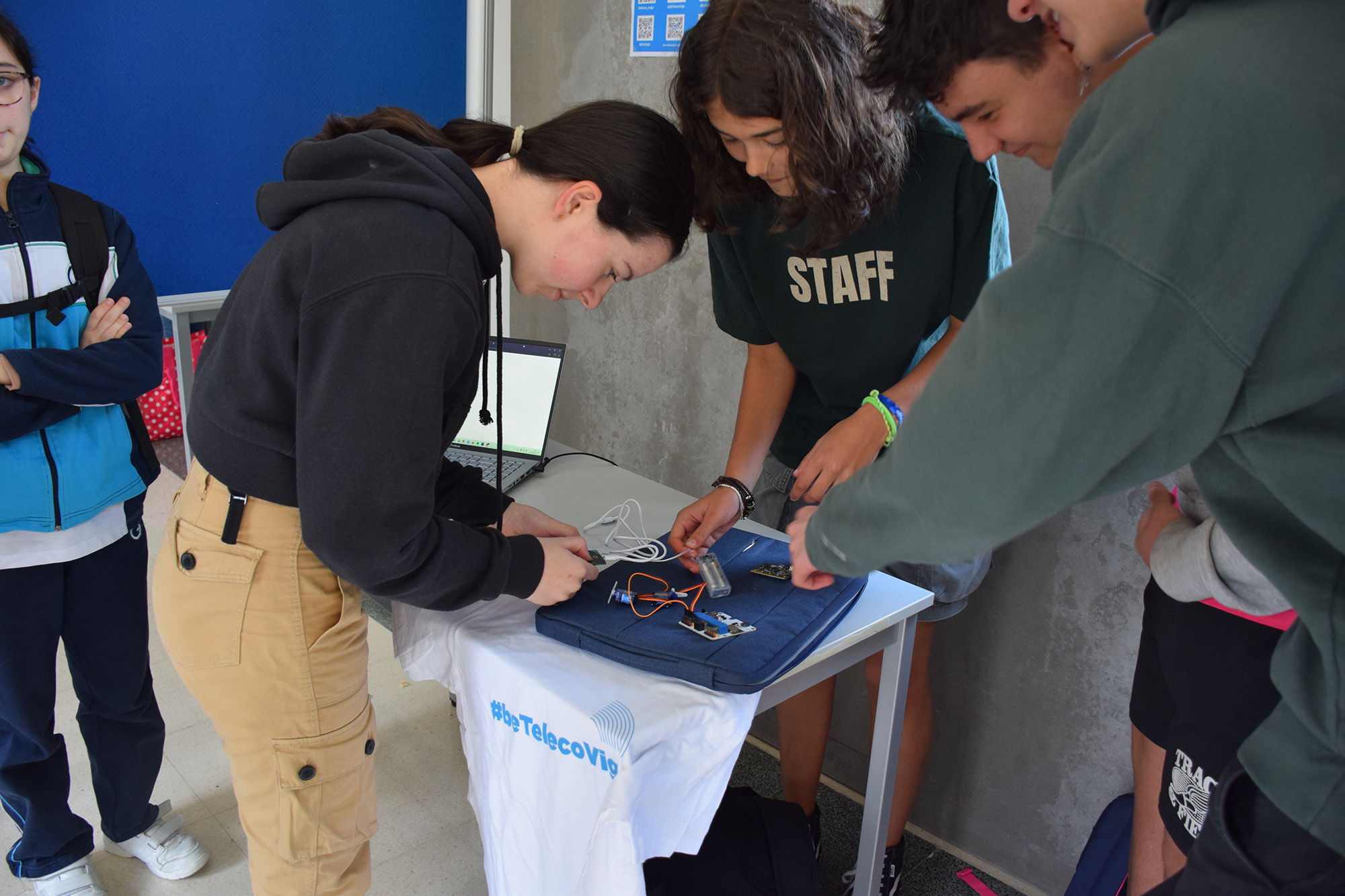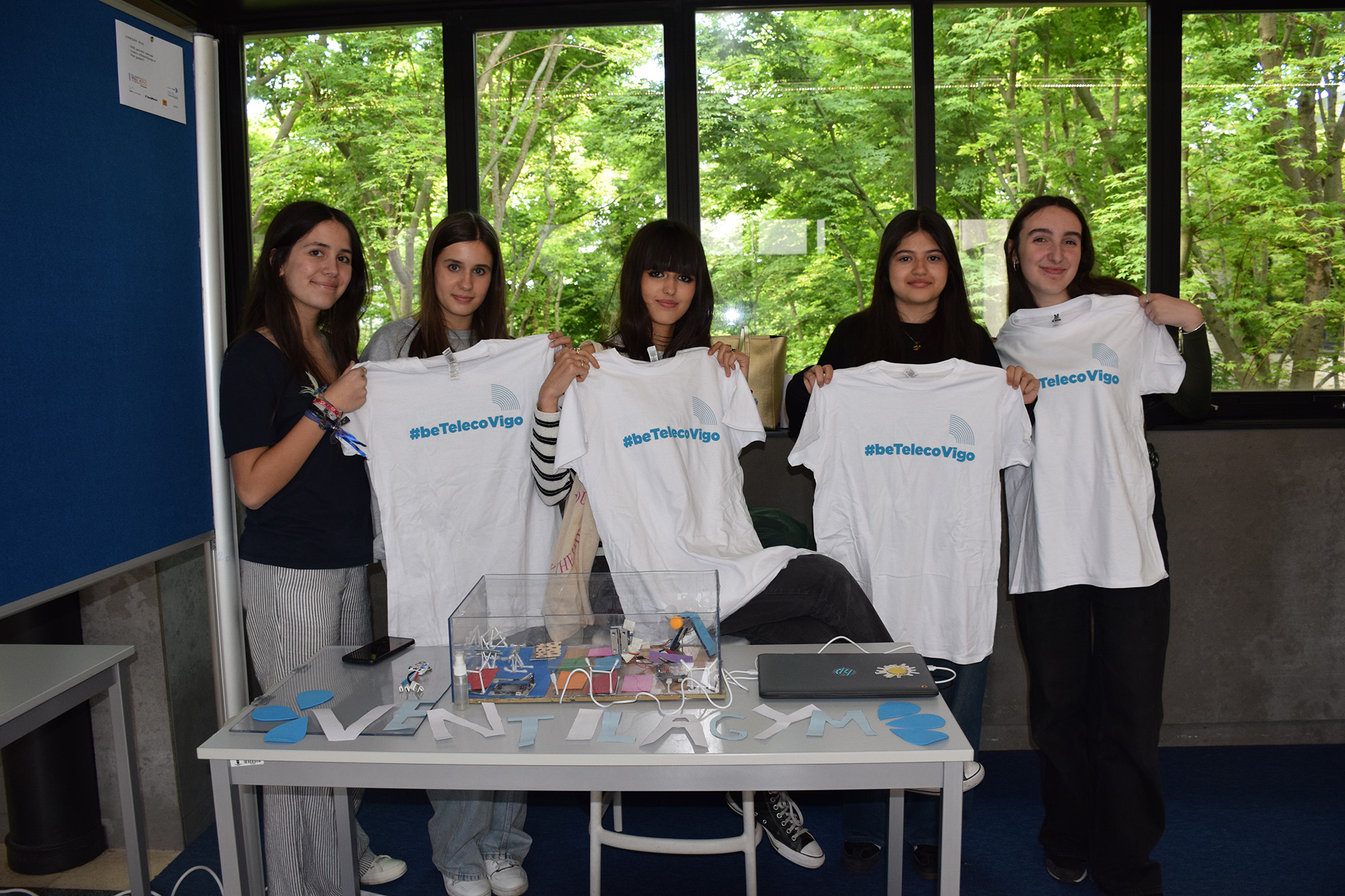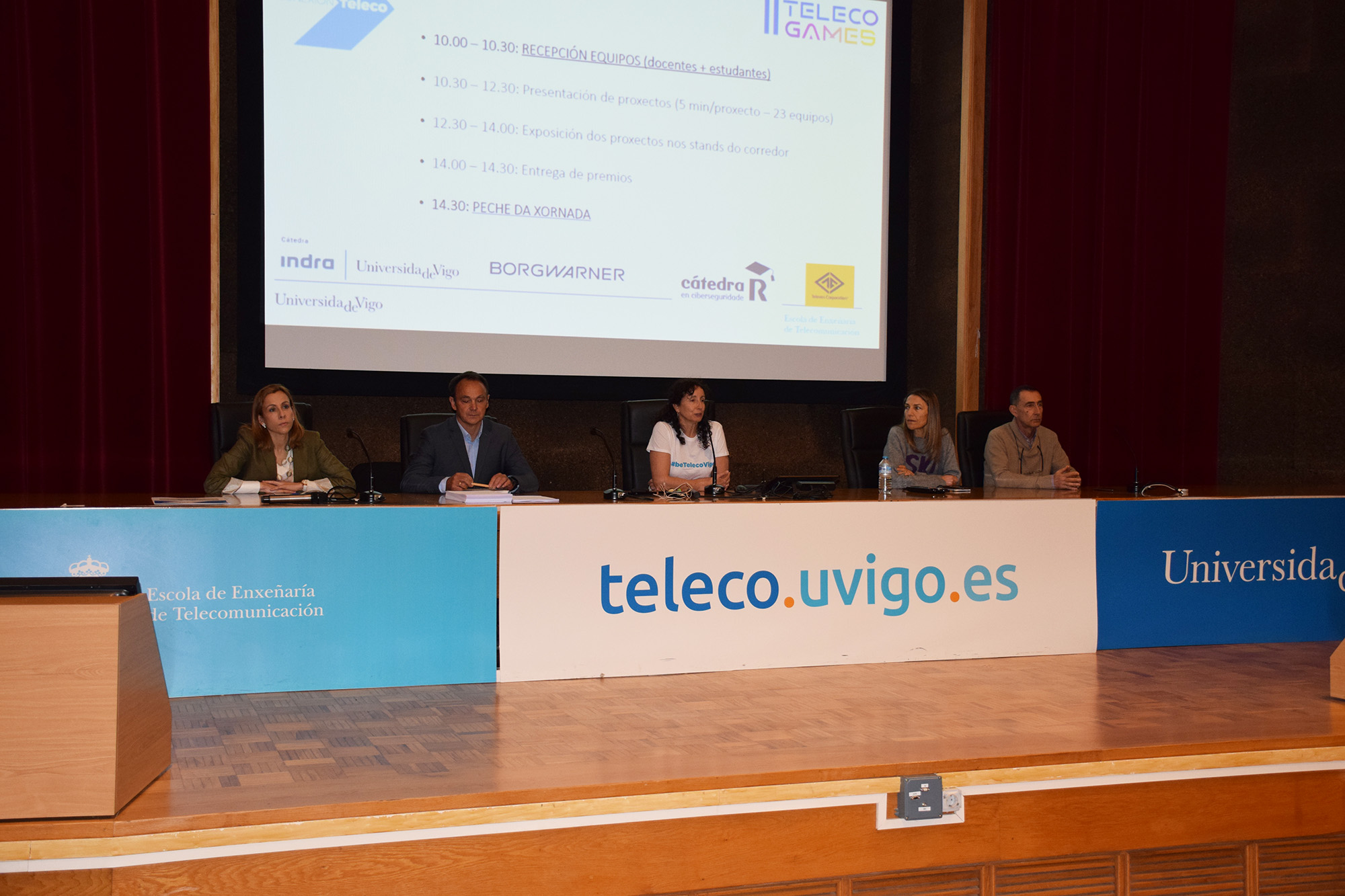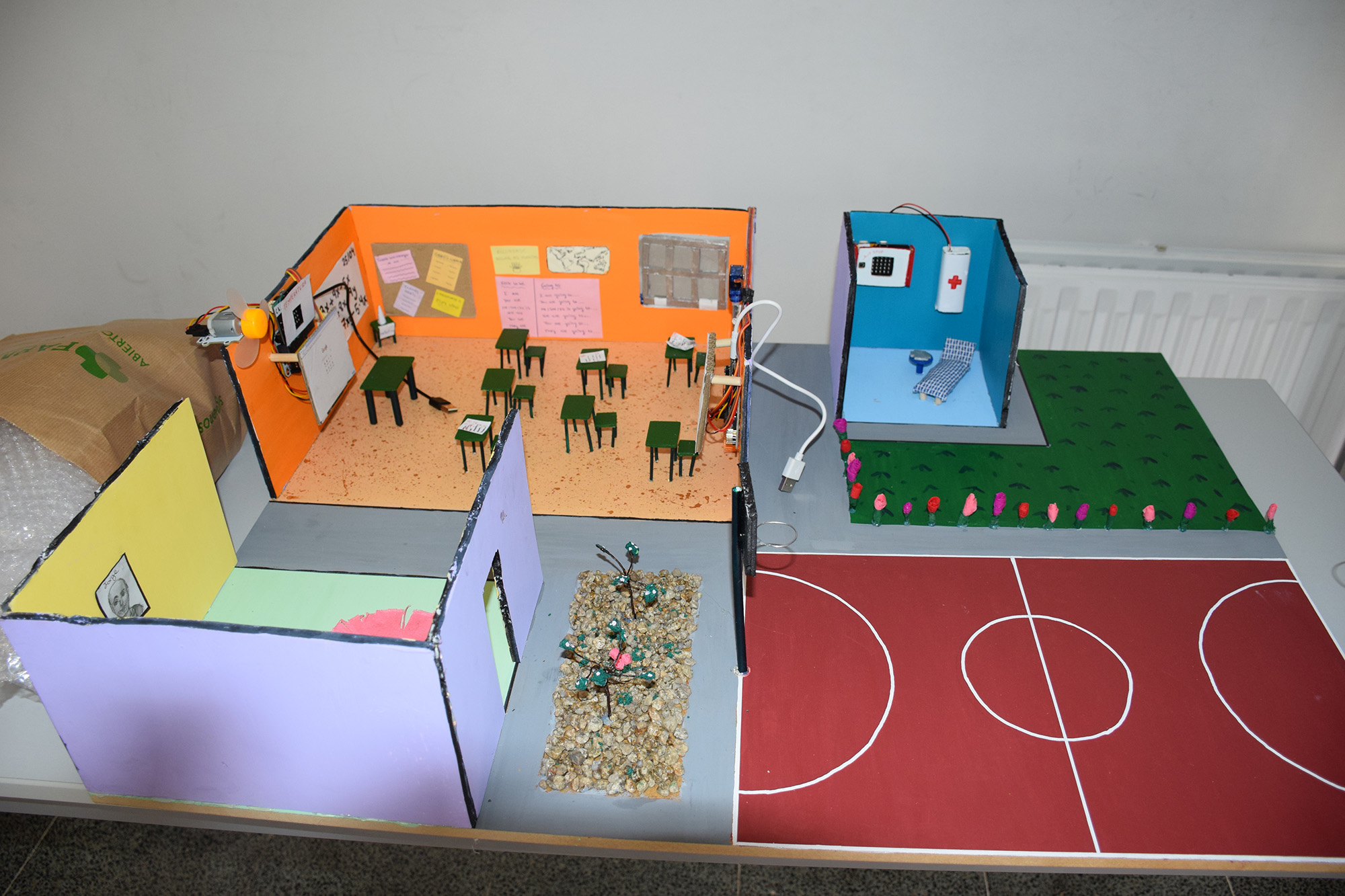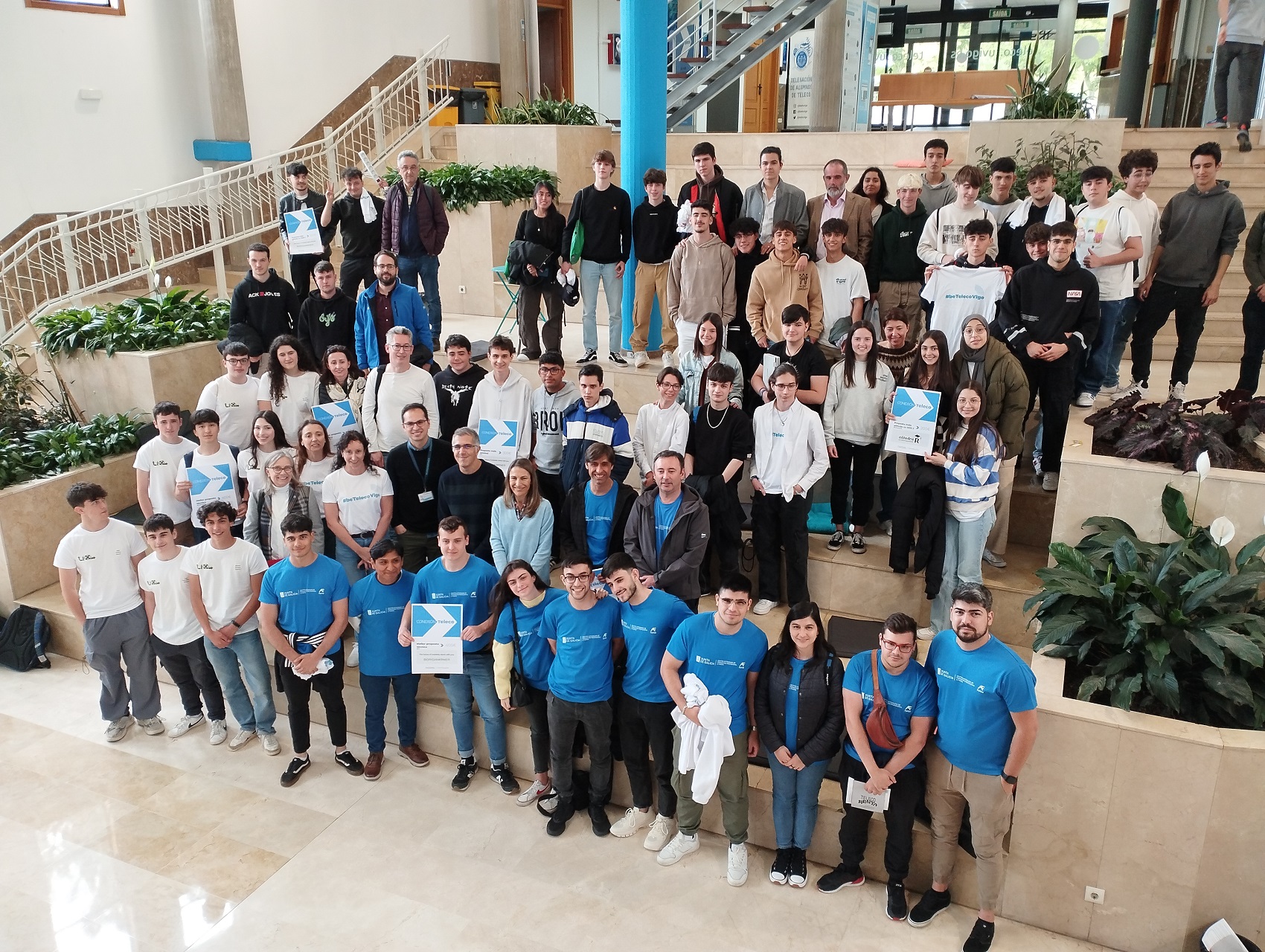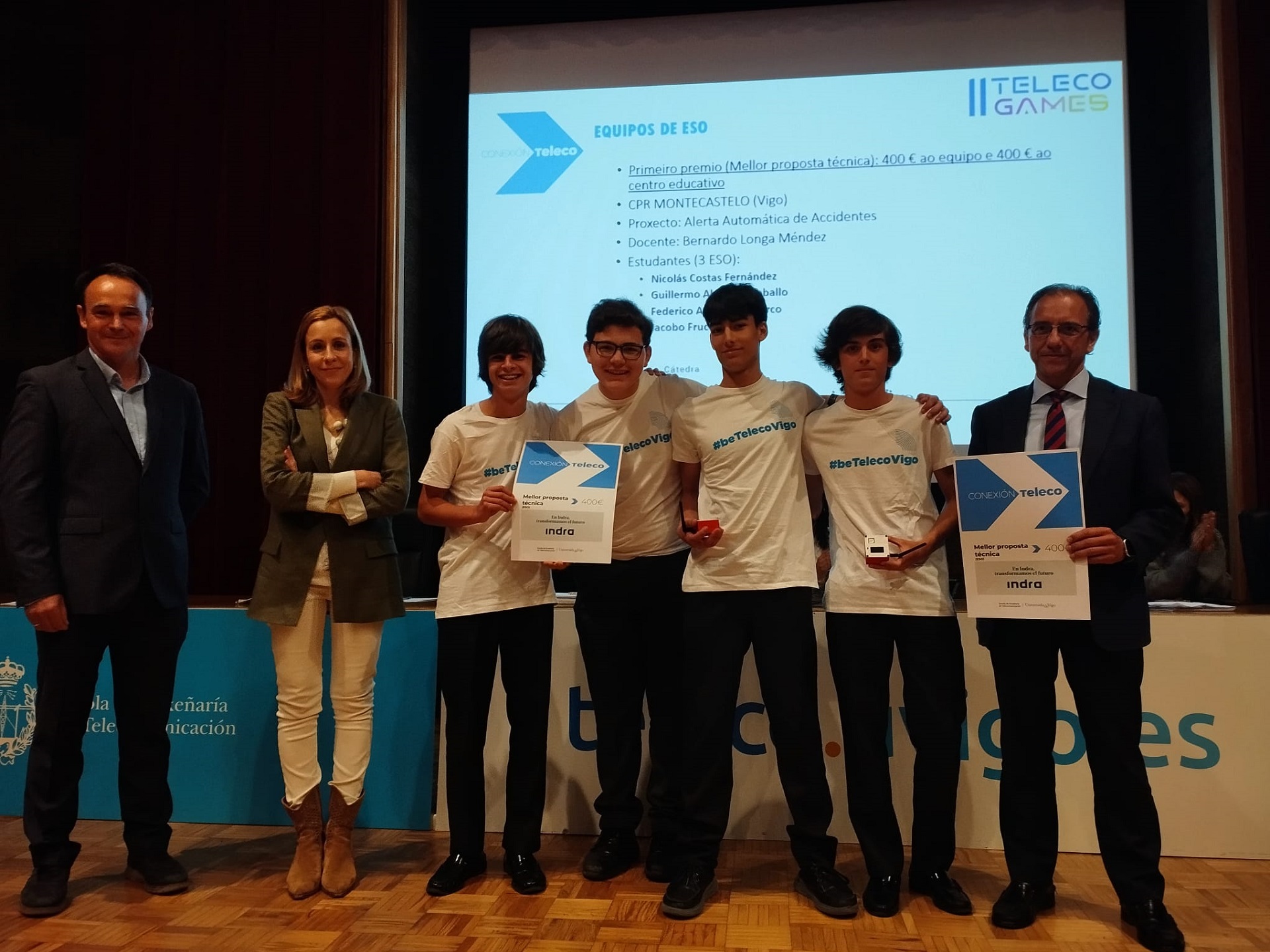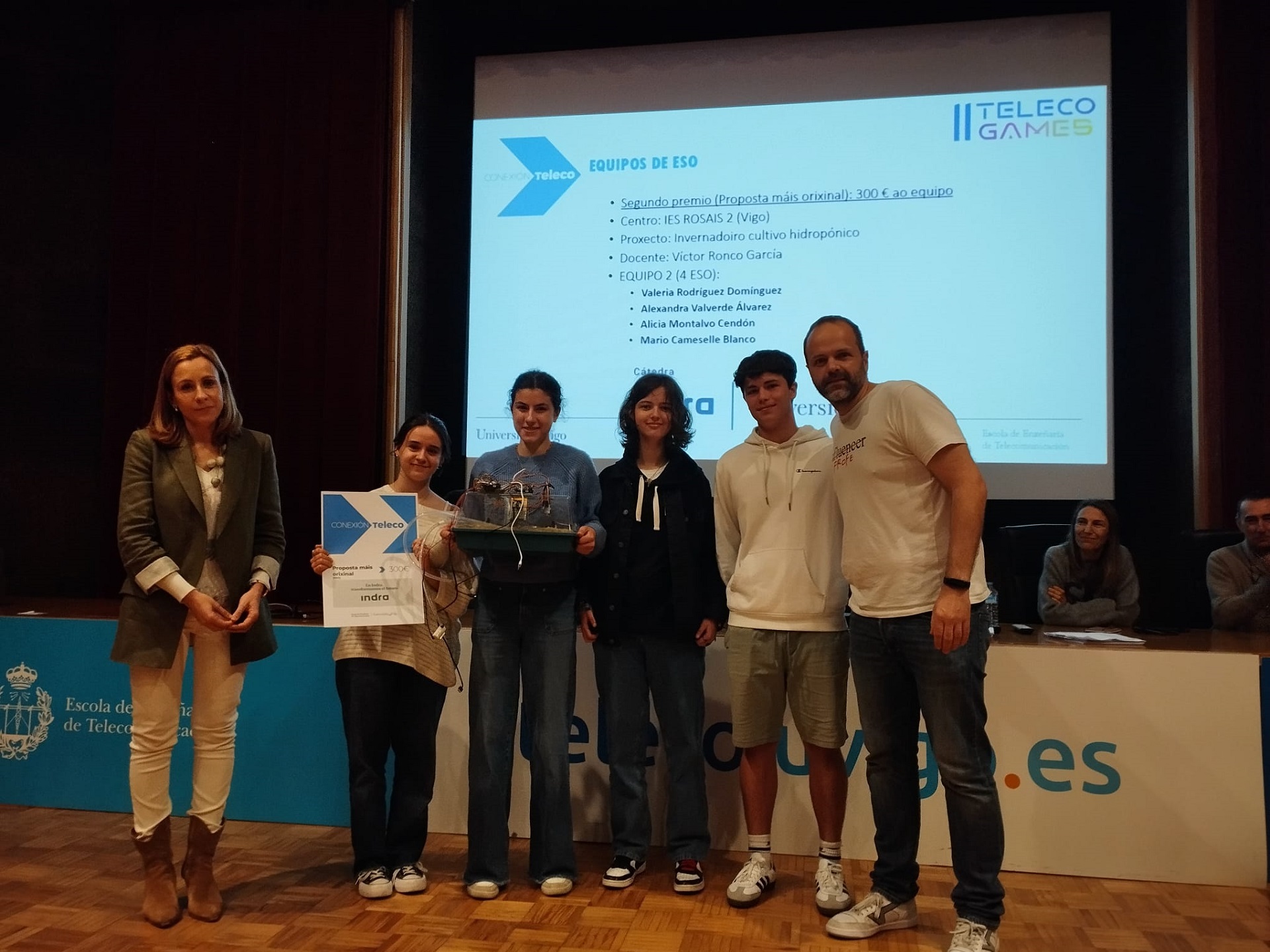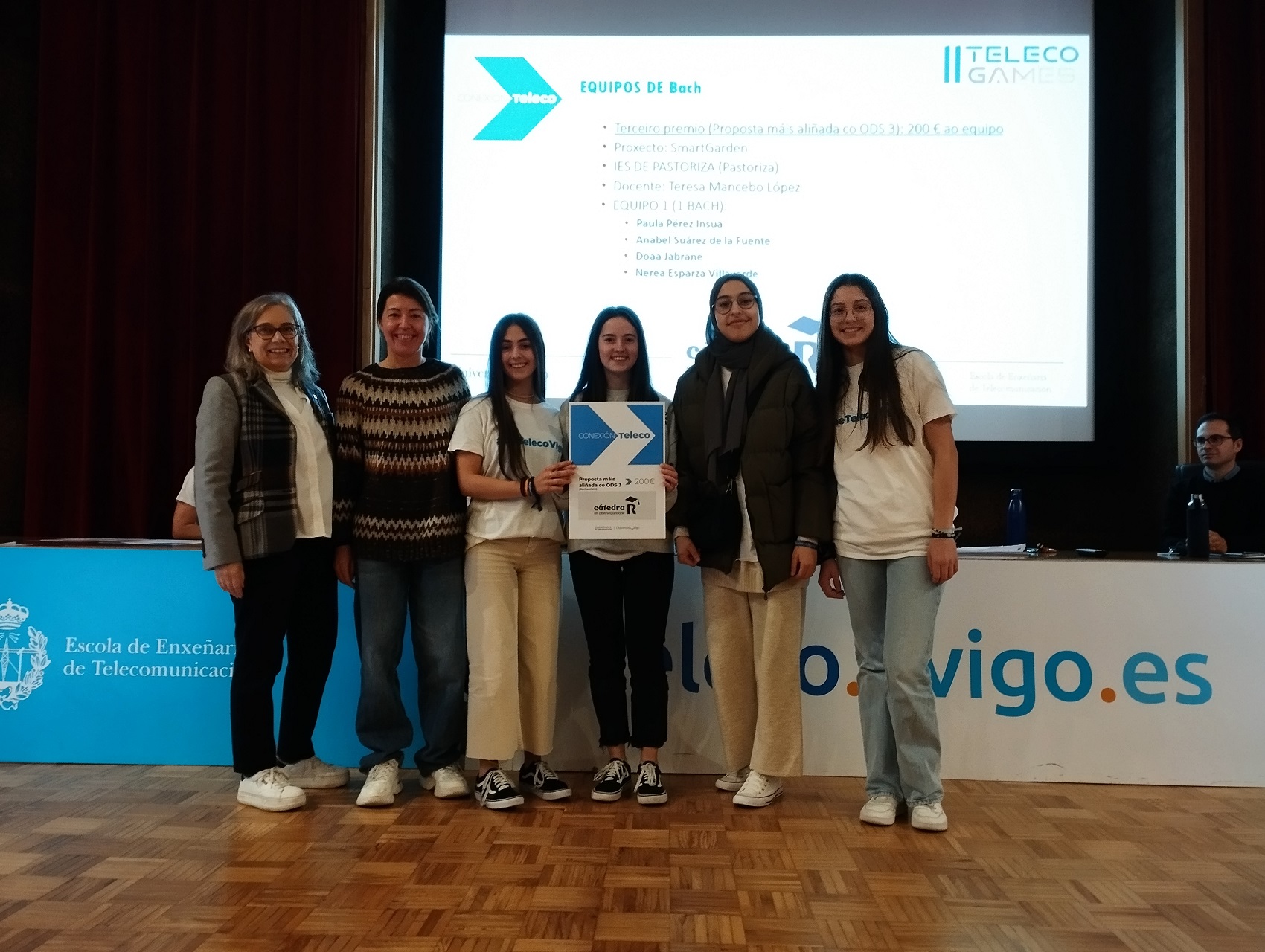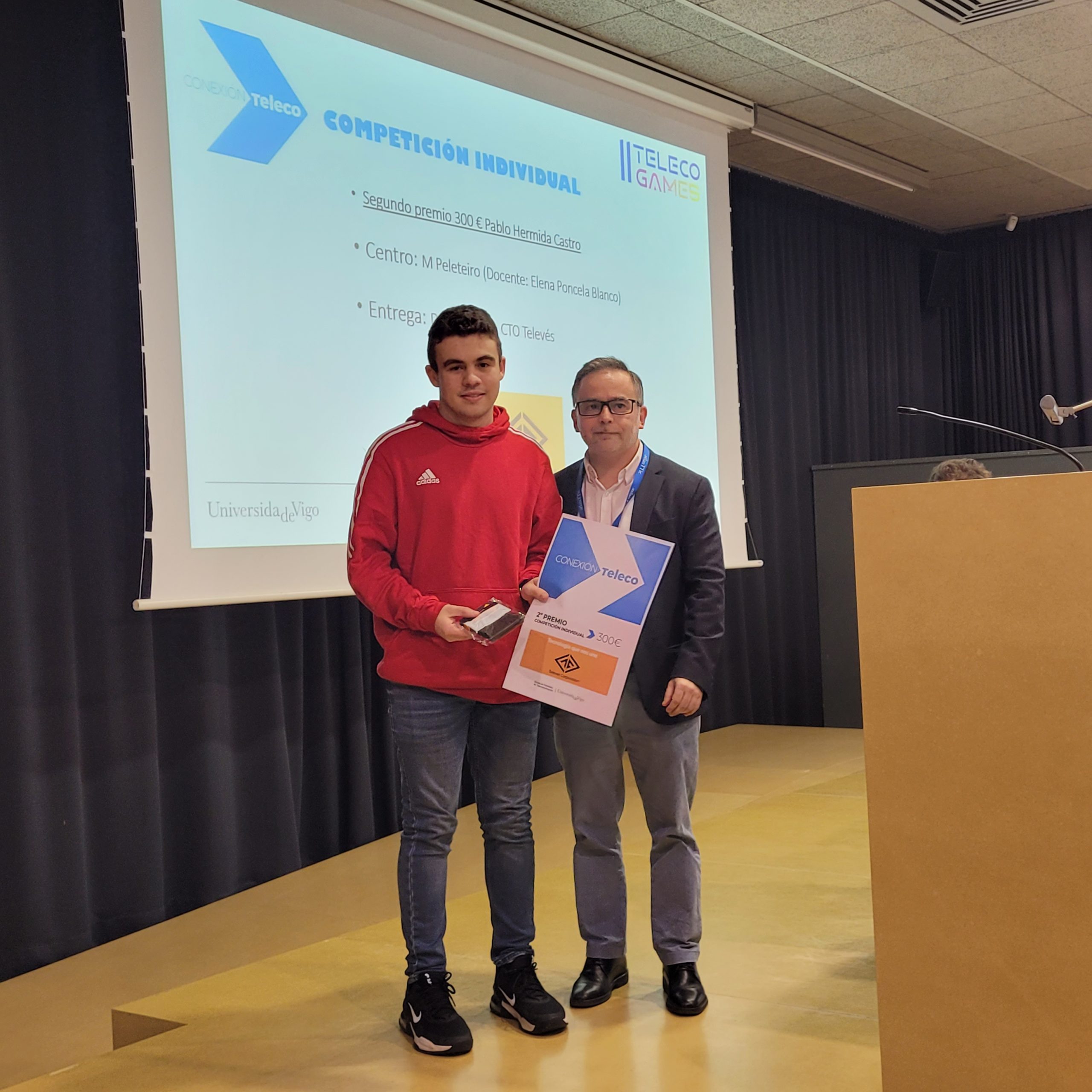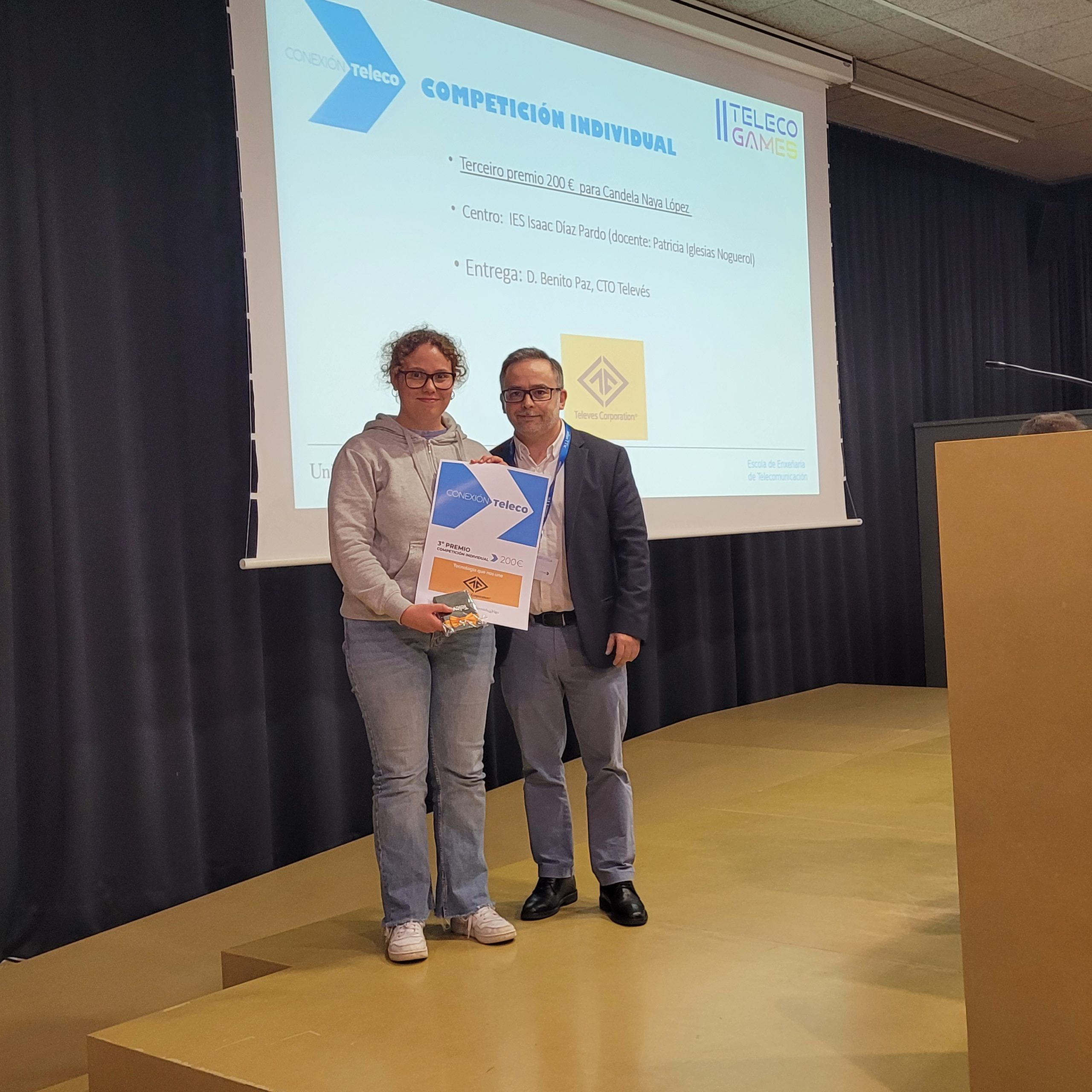Multiple prototypes and solutions are presented for problems related to SDG 3: health and well-being
Close to 300 students from around fifty secondary education institutes throughout Galicia participated between Thursday, April 25, and Saturday, April 27, at the School of Telecommunication Engineering in the II National Teleco Olympiad, an event that challenges students from Secondary Education, High School, and Vocational Training to test their technological ingenuity by designing prototypes and creative solutions to help solve some of the problems faced by society today, in this case related to SDG 3 of the 2030 Agenda: health and well-being.
On this first day of the competition, 172 Seconday Education students from 23 educational centers throughout Galicia participated, on Friday, 109 students from High School and Vocational Training participated, and on Saturday, five 2nd-year High School students participated individually.
Divided into teams, they presented their projects first to the jury and then to the public at different stands set up in the school corridors. In both cases, specialized audiences and the university community in general showed their surprise at the quality, creativity, and innovation of most of the projects that now, after several months of intense work in the institutes, come to light.
Varied technology for gaining health and well-being
Upon their arrival at the school, they were welcomed by the center’s director, Rebeca Díaz, and part of her team, as well as representatives from companies such as Indra, R, BorgWarner, and Televés, entities sponsoring awards in different categories, and members of the conexionTeleco network. The examples of the projects that were presented are numerous. From CPI Luis Díaz Moreno de Baralla in Lugo, they showed their particular ecoclass “a classroom where when the temperature is high, a fan turns on automatically, or when someone feels unwell, they can press a button that notifies the infirmary directly.” On the other hand, the team from San Miguel 2 school in Vigo enthusiastically explained their electronic pill dispenser, “a project with which we aim to improve the lives of the elderly and dependent people”.
In the case of a team of students from the plurilingual school María Auxiliadora Salesianos Ourense, they designed what they called VentilaGym, “a ventilation system for closed spaces applied, in this case, to a gym.” From IES Rosais de Vigo, they chose to design a classroom equipped with different technical equipment, “including a CO2 meter, a humidity meter, and a temperature meter, and depending on whether it is within the values we choose, the windows will open or the fans will turn on”. These are just some of the examples of the multiple projects that have been presented over these days.
€4800 in prizes funded by companies from conexionTeleco
After the presentations, each day ended with the award ceremony corresponding to each category of students: €400 for the team with the best technical solution and another €400 for their institute, €300 for the team with the most original proposal, and €200 for the group that presents the technological solution most aligned with ODS 3. In the case of individual awards for 2nd-year High School students, there was a first prize of €400, a second prize of €300, and a third prize of €200.
The funding for these awards comes from four of the companies from conexionTeleco, the network of companies that regularly collaborate with the School. In this case, these are the Indra Chair, R Chair, BorgWarner, and Televés. “They are the ones who help us with the purchase of materials for the teams participating in the competition and, additionally, provide the prizes for the Galician phase,” explains the School’s director.
The first morning ended with the award ceremony for the ESO teams category, sponsored by the Indra Chair. The 1st prize (best technical proposal) went to the Automatic Accident Alert project from @colegiomontecastelo, the 2nd prize (most original proposal) went to the Hydroponic Cultivation Greenhouse from IES Rosais, and the 3rd prize (proposal most aligned with ODS 3) went to the ecoClass from CPI Luís Díaz Moreno (Baralla).
In the High School teams category, sponsored by the R Chair, the winners were LixoAndGo from IES Isaac Díaz Pardo, SegurVigal from IES Rosais II, and SmartGarden from IES de Pastoriza.
The winners in the Vocational Training teams category, sponsored by BorgWarner, were the projects Pasos seguros from @cifpafarixa, MultiVacs from IES Monte da Vila, and Telemedicine and Online Health Parameter Monitoring from @iesdavinarei.
Finally, in the High School individual competition, sponsored by Televés, the winners were Hugo Domínguez Conde from Colexio M. Peleteiro, Pablo Hermida Castro, also from Colexio M. Peleteiro, and Candela Naya López from IES Isaac Díaz Pardo.
National finals in May online
The National Teleco Olympiad were launched nationwide last year with the participation of 20 telecommunication engineering schools throughout Spain – 25 in this edition – and the Official College of Telecommunication Engineers as an initiative to awaken scientific and technological vocations, promote telecommunication studies, scientific culture, technology, and innovation.
Like its first edition, the II National Teleco Olympiad takes place in two phases: a regional one, which was held this week at the EET of UVigo, and a national one, where the winning projects from the various local competitions will compete. It will take place between the 7th and 14th of next May.
Source DUVI, Atlántico Diario and Faro de Vigo.

